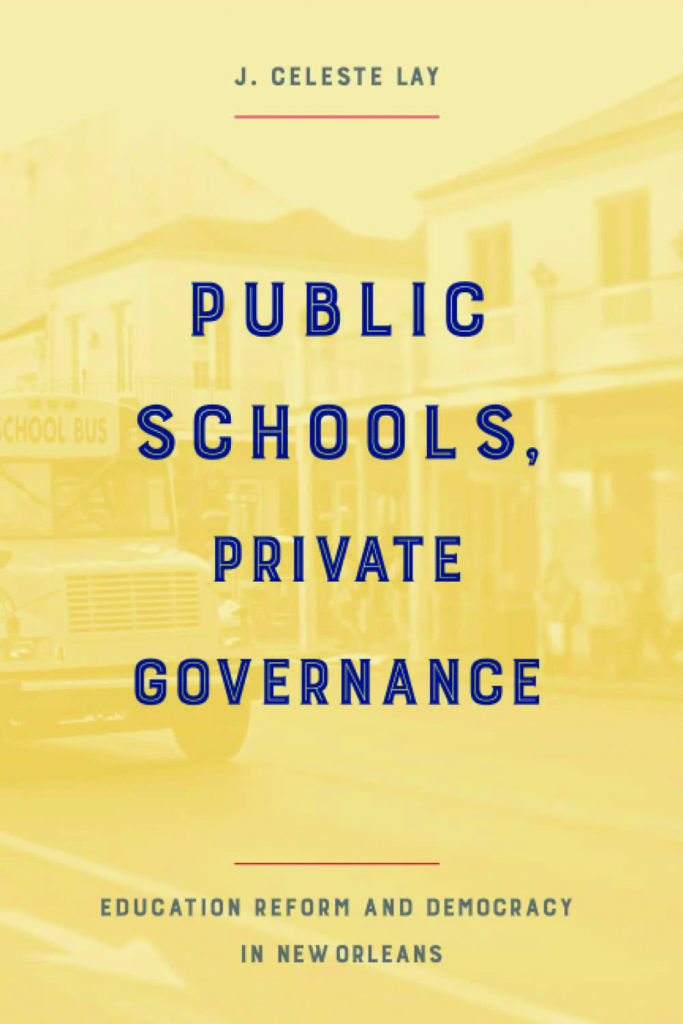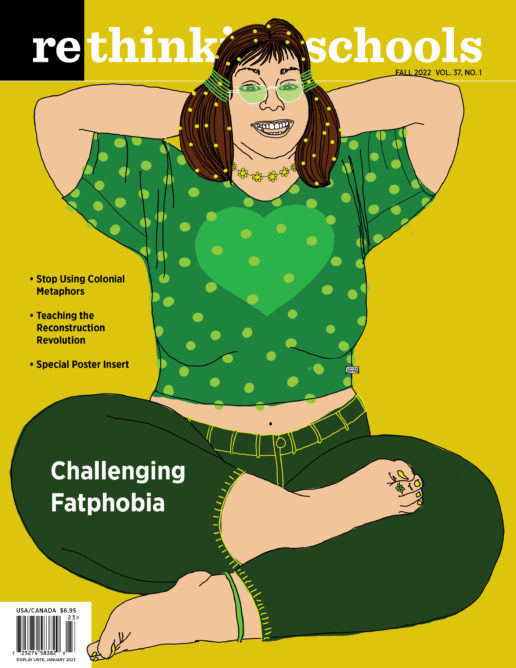The Tragedy of New Orleans Is Not Unique
Public Schools, Private Governance
J. Celeste Lay
(Temple University Press, 2022)
164 pp.
It’s been more than 15 years since the transformation of the New Orleans public schools into a marketplace of privately operated charter schools. Today, New Orleans is the nation’s only all-charter city.
Much has been written about the New Orleans takeover, usually identifying Hurricane Katrina in late August of 2005 as its genesis. But in Public Schools, Private Governance, author J. Celeste Lay begins the story earlier, with a series of legislative initiatives in Baton Rouge that predated Katrina yet laid the foundation for the dramatic dismantling that followed the storm. Those initiatives included laws defining “failing” schools and authorizing the state to take over, close, or privatize them.
Today, more than 30 states have similar laws. Although it’s tempting to view New Orleans as an anomaly, where a devastating flood and the mass evacuation of the city created the conditions for privatization, we may all be just one disaster away from a similar fate.
Lay, an associate professor at Tulane University, details these incremental policy reforms, then the flurry of steps by reformers (mostly from outside the state) to take advantage of the “greenfield” opportunity presented by Katrina. She then turns to the results, and their impact on parents, students, and communities. Confusion reigned in the early months after the storm. The city’s schools opened under a hodgepodge of structures with differing policies and rules in place. Parents were left baffled as they tried to navigate a world turned on its head. Their old neighborhood school might still be boarded up. Or, it might have undergone a sparkling renovation — but no longer be open to neighborhood children. Parents had to submit applications at each school they were interested in for their children. Some schools had admissions tests or requested writing samples. Some required parent interviews or volunteer hours. Some provided transportation, others did not. Few of the new charters welcomed students with disabilities. The schools run by the state Recovery School District quickly distinguished themselves as schools of last resort, or, as students themselves termed it, “dumping grounds” for those who could not choose or were not chosen.
But now, students who might be neighbors or even siblings were scattered like leaves, attending schools across town that offered no better prospects of success than before.
Some parents rebelled, filing lawsuits and recounting horror stories to state authorities. In response, the architects of reform appeared to respond, consolidating the application process in 2011 under a single program called OneApp. Still, several schools were exempt from participating in OneApp, and others managed to find ways around it. As Lay writes, “OneApp was a concession on the part of reformers, but on their terms. Its mechanics remain a mystery to the public, and most parents lack trust that it is fair.”
Race and community are, of course, at the center of the New Orleans story. Inequities — stark before Katrina — re-created themselves almost immediately. But now, students who might be neighbors or even siblings were scattered like leaves, attending schools across town that offered no better prospects of success than before. In one poignant interview, a mother mourned the loss of community cohesion that comes from a neighborhood-based system:
“That’s how you build those relationships, because this is your neighborhood school and there’s an environment, and parents associate. Because now you’re just in the carpool lane. You put your kid in the car. You keep going.”
The current siting of schools in New Orleans is highly racialized, notes Lay, with some prime school buildings reopened as charters that end up enrolling majorities of white students, even as they sit in historically Black neighborhoods. This doesn’t go unnoticed by parents, who see the destruction of their neighborhoods as an intentional strategy by reformers and policymakers.
Lay also discusses how the assault on public schools has impacted democracy in the city. Whether through the mass firing of the entire (mostly Black) teacher workforce after the storm, or the appointment of (mostly white, mostly non-educator) charter governing boards whose members are not only uninterested in, but downright contemptuous of parent input, educational reform in New Orleans has effectively silenced parent voice, particularly that of Black parents.
Unsurprisingly, that lack of voice leads to resignation. One mother explained to Lay that when the system is stacked against you, the only thing left to do is fend for yourself. Hence, the dismantling of a community-based public institution and its replacement with a competitive free market system lays waste to traditional sources of people power, like unions and community associations. Black parents in particular, Lay found, acknowledge the widespread injustice, but said they had done the best they could for their own children. As Lay writes, “It is difficult to motivate someone to organize and fight a system when she believes she is ‘blessed.’”
Incremental steps to dismantle communities and democratic process, no matter how innocuous they seem, beg for collective resistance — before a sudden storm breaches the levees.
Just for the record, the “New Orleans miracle” hasn’t changed the prospects for children in the Crescent City. As Lay writes in Public Schools, Private Governance, there was nothing magical about changing the governing structure of the New Orleans public schools. “Schools that are able to pick their students, not surprisingly, are much more high performing . . . the average composite scores do not change much from the pre-Katrina period.” It turns out that privatization doesn’t improve educational outcomes. But it does weaken public agency. And perhaps that was the idea all along. As Lay concludes: “As the school system in New Orleans has become less and less democratic, it becomes increasingly difficult for the collective citizenry to be concerned about them, and easier to privatize them and, ultimately, to give up on the enterprise of public education altogether.”
We make a mistake if we view this tragedy as unique to New Orleans. The ability of communities, especially low-income and communities of color, to control their schools and their democratic structures is under assault across the country. Incremental steps to dismantle communities and democratic process, no matter how innocuous they seem, beg for collective resistance — before a sudden storm breaches the levees.


